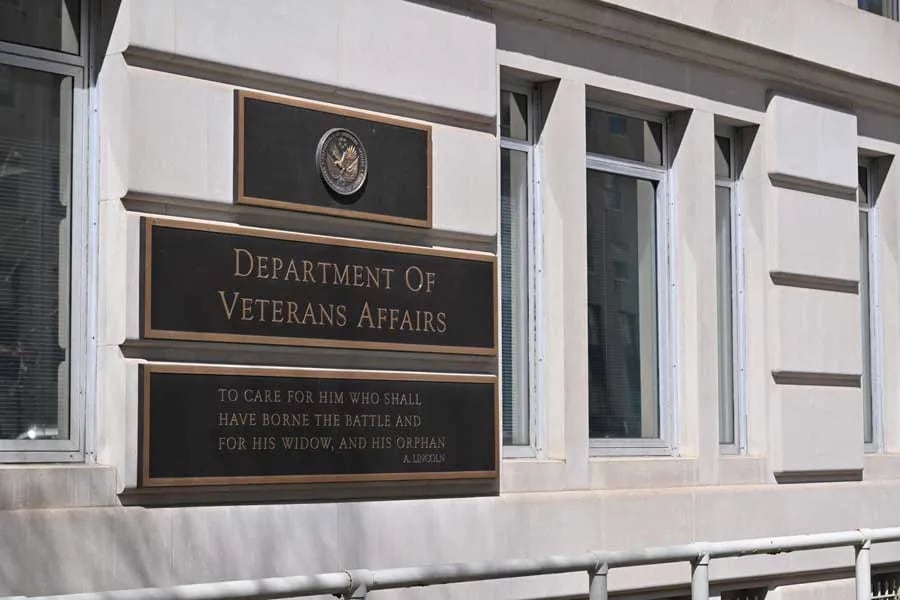ALBUQUERQUE, N.M. — While compiling a lengthy list of Sandoval County veterans -- from the Civil War through Vietnam -- retired Army colonel and amateur historian David C'de Baca made an intriguing find: Two Navajo women who served as scouts with the Army's 20th Infantry Regiment in the summer of 1886 could be the first women to have officially been enlisted in the U.S. Army.
Because it wasn't until this year that all jobs in all branches of the military became open to women, even combat roles, C'de Baca's discovery has piqued at least one historian's interest.
"What he's turned up is not unusual -- except for the fact that they were actually enlisted," said Paul Hutton, distinguished professor of history at the University of New Mexico. "That I find amazing."
"There were certainly women who were used by the military as intermediaries throughout the Indian Wars," said Hutton, a prolific author whose recent book "The Apache Wars" delves into that conflict in great detail.
"But I found the fact that he actually found enlistment records to be pretty amazing."
The Apache Wars were a series of armed conflicts between the Army and various Apache nations fought in the Southwest from 1849 to 1886.
Even though the Apaches and Navajos are linguistic cousins, by the time of the American occupation of New Mexico they were bitter enemies who often battled over hunting country, Hutton said.
"The U.S. campaign against the Navajos during the Civil War had actually freed the Apaches from that northern threat," he said. "Navajos, as well as the Pueblo, were happy to act as scouts against their traditional Apache enemies and saw hard service until the final surrender of Geronimo in 1886."
Two years ago, C'de Baca got involved in the Sandoval County Historical Society's efforts to honor its World War I veterans as the centennial of that war approached.
"There was a presentation being made at the Gutiérrez/Minge House having to do with World War I," C'de Baca said. "As part of that, they were going to have a remembrance ceremony . for the veterans buried in the cemetery next door. There were 16 in the cemetery, so I took it upon myself to find out who the others were. When I was done, I had 44."
The historic Gutiérrez/Minge House, also known as Casa San Ysidro, is now a museum in C'de Baca's hometown of Corrales.
After making presentations on the World War I veterans, people began asking when the historical society would do the same for veterans of other wars, C'de Baca said. He then began collecting names and photos of all Sandoval County veterans.
Those efforts have culminated in an expansive 34-panel display inside the Sandoval County administrative offices in Bernalillo, where the names of more than 5,800 veterans - and photos or images of more than 1,600 - grace the foyer's walls.
The display, dedicated on Memorial Day this year, will be there permanently, C'de Baca said, and it will grow as new veterans are discovered. Other panels, such as one dedicated to female veterans, are planned.
"We knew we had to capture these stories before it was too late," C'de Baca said. "In another five to 10 years, it would be impossible because we wouldn't know who (of the veterans' descendants) might still have their photos and stories."
While checking about 4,500 military records from the Indian Wars, C'de Baca came across the names of two Navajo women -- Mexicana Chiquito (whose given name was Nal-Kai) and Muchacha -- who were enlisted as Army Scouts by the 20th Regiment, U.S. Infantry, at Fort Wingate. The records indicated that Mexicana Chiquito, 24, served from May 24, 1886, to Oct. 11, 1886. Muchacha, 21, served from May 26, 1886, to Oct. 11, 1886.
C'de Baca pointed out that language barriers among Native Americans, Hispanics and Army officers often resulted in the military assigning aliases to some recruits, which appears to be the case with the two women.
Seeking additional verification of his findings, C'de Baca enlisted the help of U.S. Sen. Tom Udall's office, which requested the women's military records through the National Archives. The records verified the women's enlistment dates and other information, including that Mexicana Chiquito had applied for and received an Army pension.
"I couldn't find a (pension) record for Muchacha, which suggests she died before Congress authorized the pensions" in 1917, C'de Baca said.
UNM's Hutton said it was common for the Army to hire indigenous people for various tasks during the Indian Wars, ranging from translators and trackers to sharpshooters and warriors who fought in battle.
"The Army enlisted Navajo scouts throughout the war against the Apaches," Hutton said. "Most served out of Fort Wingate, but they also enlisted from other tribes and pueblos."
Although such enlistees were called "scouts," they did a variety jobs for the Army, he said.
And there are documented cases of women being hired informally by the Army -- but not enlisted -- he said.
"It's one thing to use them informally, which went on all the time. But to actually enlist them. . All I can say is it's the first time I've seen it," Hutton said.
"It really is fascinating, and he's turned up something of great interest" that warrants further inquiry, Hutton said.
"There's probably a story behind that -- how useful these women were and what their particular skills were," Hutton said.
For the time being, C'de Baca is content knowing that his research may have discovered what he calls "America's first GI Janes."
Information from: Albuquerque Journal, http://www.abqjournal.com





